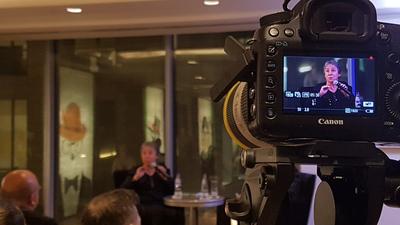Our emergency teams have used cars, boats, planes and helicopters to reach people in some of the areas that were hardest hit by the typhoon.
The storm’s toll was clearly massive and much of the region’s infrastructure was destroyed, meaning that large numbers of people have yet to receive assistance — particularly in outlying islands that neither the national government nor international agencies have been able to reach.
Médecins Sans Frontières/Doctors Without Borders (MSF) teams reached northern Cebu island, eastern Samar island, Panay Island, and western Leyte province.
Typhoon damage
“Access is extremely difficult and [the situation] is preventing people from receiving help,” says Dr Natasha Reyes, MSF emergency coordinator in the Philippines.
“Our priority is to get to those people in more isolated areas; they are the hardest to reach and often the last to receive much-needed assistance.”
One MSF team went by plane to Guiuan, a village of 45,000 people in the east of Samar, one of the first areas the typhoon hit. The damage is extensive and the needs immense.
“The situation here is bleak,” says Alexis Moens, MSF’s assessment team leader. “The village has been flattened – houses, medical facilities, rice fields, fishing boats all destroyed.
"People are living out in the open; there are no roofs left standing in the whole of Guiuan. The needs are immense and there are a lot of surrounding villages that are not yet covered by any aid organisations.”
Medical aid
A full team will return by helicopter tomorrow and immediately get to work delivering medical assistance to as many people as possible.
The priority will be to treat the wounded and ensure that people who need additional care are referred to more specialised services. The team will also provide clean water, shelter and relief items.
“Today I met a man who lost his whole family,” says Moens. “He was hospitalised because he tried to stab himself with a knife in the chest.
"Tragically, we hear these sorts of stories in many places. There are villages that have lost so many people, and psychosocial assistance is going to be essential to help people rebuild their lives.”
Emergency response
Another MSF team carried out an assessment of Panay Island by helicopter and estimates that around 50 percent of Roxas City, a town in Cadiz province, has been destroyed.
Further assessments will be carried out in the affected villages surrounding Roxas. A third team is currently in Ormoc, from which it will survey the situation in western Leyte.
A fourth MSF team drove to northern Cebu, where most of the people who were displaced appear to have found shelter with other families and communities.
The local hospital was overwhelmed with patients immediately after the typhoon passed through the area, but other nearby health centres and hospitals provided support, and it is now coping relatively well.
The MSF team later boarded a ferry to Bantayan Island, where they will stay overnight and continue the assessment.
More staff and materials on the way
MSF is rapidly scaling up its response and will have more than 100 staff in the area in the coming days, including doctors, nurses, surgeons, logisticians, psychologists, and water and sanitation experts.
Nine planeloads of aid materials—including medical supplies, shelter materials, hygiene kits, and water and sanitation equipment—are being dispatched to the Philippines from MSF warehouses around the world. Three of the planes arrived in Cebu today.
Here from Facebook? Prefer to donate in a different country?
Select a country below or from our list:
Find out more about MSF's work in the Philippines




